- Home
- Janet Evanovich
The Heist Page 2
The Heist Read online
Page 2
Kate sped straight from the hospital back to the room she’d booked at Circus Circus, the least expensive hotel on the Strip. She approached her door quietly, one hand on her holstered gun. She slipped her key card into the lock and slowly eased open the door, hoping Nick Fox had been arrogant enough to pull the same stunt twice, hoping to catch him in the act.
No such luck. The room was empty and smelled like a freshly chlorinated swimming pool. She sat down on the edge of the bed and sighed. Not her best day. And she knew she’d catch a lot of crap for letting Nick get away instead of finding an excuse to shoot him. She certainly had plenty of them, the latest one being the picture of “Dr. Eunice Huffnagle” that she’d managed to snatch off the wall before anyone noticed it.
Kate stared glumly at her reflection in the mirror and started to take off her Kevlar vest. And that’s when she noticed it. She didn’t believe it at first, and had to look over her shoulder to confirm it, but there it was: a Toblerone bar on her pillow.
SIX MONTHS LATER …
When the average person accumulates more stuff than he can fit into his house, he’ll haul everything to a rented cinder-block storage unit, stick a cheap padlock on the roll-up door, and immediately start buying more junk. If you’re someone as old and rich as Roland Larsen Kibbee, you build a museum for it all, carve your name in marble out front, and charge admission so everybody can admire your stuff and, by extension, you.
Not only does opening a museum free up some room in your mansion, it has the added benefit of being a great status symbol, one that’s hard to top even in an age when billionaires are launching rockets into space. Roland’s collection of paintings, sculptures, and jewelry was acquired with the fortune he’d earned snatching up distressed California farms, kicking the owners off their properties, and harvesting their crops using the cheapest labor possible, thus becoming one of the state’s largest employers of illegal immigrants and a pillar of Mexico’s economy.
Of course he didn’t build his museum in Mexico. He established the Roland Larsen Kibbee Art Collection in San Francisco, in a massive Pacific Heights mansion, modeled after a French château.
Roland’s business practices clashed with the liberal ideals of his twenty-six-year-old curator Clarissa Hart, but her master’s degree in fine arts wasn’t getting her any work, she had $97,000 in student loans to pay off, and if she had to live another day with her parents, she’d smother them in their sleep. So she swallowed her ideals and took the paycheck each month from Roland. And while the Kibbee wasn’t the Guggenheim or the Getty, and the artwork, most of it nudes, made Clarissa feel like she was a hostess at the Playboy Mansion, she took solace in the fact that she was still a museum curator.
The collection of paintings and objets d’art was displayed in hallways and intimate salons to make the visitors feel as if they were guests in Roland’s home, though the eighty-five-year-old agribusiness magnate had never lived there. He lived in Palm Beach, Florida, with a twenty-two-year-old stripper named LaRhonda who was waiting for him to die. After he breathed his last agonizing breath she hoped to get her hands on the Crimson Teardrop, a rare two-carat red diamond that was his latest acquisition.
The Teardrop was also the Kibbee’s best shot at wide recognition, and in anticipation of the Crimson Teardrop’s opening-night display, the marble floors were being polished, the paneling was being restained, and the leather couches and armchairs were being replaced with new models. Clarissa was playing tour guide to SFPD Inspector Norman Peterson, who’d shown up to talk with her about traffic control during the exhibition and to make sure the museum had taken adequate security measures to protect the diamond.
“I’ve driven by this place a thousand times and never noticed there was a museum here,” Peterson said, rubbing a mustache that looked like a very large caterpillar taking a nap under his bulbous nose.
He wore his badge on a lanyard around his neck in what Clarissa assumed was an unsuccessful attempt to cover his big belly and the mustard stain on his tie. She placed him in his mid-thirties, though he wouldn’t see forty if he didn’t change his eating habits.
She was right about the age, but wrong about everything else. Inspector Peterson was actually Nick Fox, padded to look fat, his face disguised by layers of expertly applied prosthetics and makeup.
“We’re a boutique museum,” Clarissa said as they made their way around the crew that was putting the new furniture into place.
“What’s that mean?”
She could have said that it meant they were smaller, more intimate, and more carefully curated than larger museums, but something about him, and his absolute lack of pretension, changed her mind.
“It means that people drive by this place a thousand times and never notice us.”
“That’s a shame, because you’ve got some good stuff here.” Nick stopped to look at a life-size five-hundred-year-old marble statue of a naked woman sitting on a tree stump and clutching her left breast. “You’d think she’d have brought a pillow or a blanket to sit on.”
“She was beyond those kinds of concerns.”
“Nobody wants to get a splinter in their butt. Who was she?”
“Aphrodite,” Clarissa said.
“Don’t know her,” Nick said. “But keep in mind, you’re talking to a guy who walks through the Wax Museum on Fisherman’s Wharf and doesn’t recognize half of the supposedly famous people on display.”
Clarissa gave him a look, just to check if he was teasing her, and decided that his remark was genuine. She’d never visited the Wax Museum but knew they probably got more visitors in a day than the Kibbee got in a month.
“She’s the Greek goddess of love, Inspector. Her origin story is interesting. The young and envious Titan Cronus wanted to dethrone his father, Uranus, ruler of the universe. So Cronus cut off his father’s genitals with a scythe, threw them into the ocean, and Aphrodite rose up out of the frothy waves.”
“And she symbolizes love?” Nick said. “That’s brutal.”
“You could say that’s the theme behind every piece in the Kibbee collection,” she said, though she doubted there was any theme at all to Roland’s collecting of artwork, or wives, besides an obvious breast fixation. “The dark side of love. That’s also the allure of the Crimson Teardrop.”
“I thought it’s because it’s worth a gajillion dollars.”
“Closer to fifteen million. It’s an exquisite diamond, but as a piece of art its value comes from its history.” She led him into the salon where the Crimson Teardrop was displayed in the center of the room, in a glass box, on top of an ornate marble pedestal. “It’s named for all the love, death, and sadness that has surrounded it.”
Nick was well aware of the diamond’s history. The diamond had been discovered in 1912 by two young British naturalists hiking through South Africa. The couple were deeply in love, and intended to use the stone in a wedding ring, but when word got out about their find, they were hacked apart by machete-wielding thieves, and the diamond was stolen.
The stone somehow made its way to Russia, where it was fashioned into a necklace that Tsar Nicholas Romanov gave as a gift to his wife, Alexandra. She later passed it along to her daughter Anastasia, who was wearing it under her clothing, along with other heirloom jewelry, when the family was executed in July 1918.
The jewels pillaged from Anastasia’s corpse, as well as those hidden on the other Romanovs and their servants, were sold and resold, and the necklace didn’t appear again until November 3, 1929. That’s when banker Dick Epperson and his wife, Dollie, left destitute by the stock market crash late the previous month, dressed in their finery, kissed each other, and then jumped hand in hand off the balcony of their Park Avenue apartment. The Crimson Teardrop was around Dollie’s neck. No one knew how she’d come to possess it, but her heirs quickly sold it to pay off debts.
More owners and tragedies followed over the decades, none making news until, legend has it, the Crimson Teardrop was acquired by a secret admirer who
supposedly gave it as a present to Marilyn Monroe shortly before her death in 1962. The diamond wasn’t actually seen again until recently, when oil company heiress Victoria Burrows died at the age of eighty-seven in the Santa Barbara home she hadn’t left since the death of her husband in 1965.
Roland Larson Kibbee snatched the diamond up at the Burrows estate sale, and now it’s my turn to snatch it from Kibbee, Nick thought.
“They say the diamond is cursed,” Clarissa said. “Especially for lovers.”
“Somebody is going to want to steal it anyway. What’s to stop them?”
“A state-of-the-art alarm system, magnetic fields around the doors and windows, and, in this room alone, motion detectors, heat sensors, and a half dozen wireless cameras, and that’s just for starters,” she said. “You’ll notice there are no windows or doors in here.”
“Of course I did,” Nick said, looking around. “I am a trained detective.” And thief.
“The room is essentially a nicely decorated open vault. There’s only one way in, through the archway behind you. If any of the security systems are tripped, a recessed two-foot-thick reinforced steel door drops down, trapping the would-be thief inside and sending an instant alert directly to your police station. How fast do you think you can get here once the alarm is tripped?”
“You got the guy trapped, right?”
“Virtually entombed. The steel door is designed to withstand explosives and hours of concentrated assault by drills and blowtorches.”
“So what’s the rush?” Nick shrugged. “Maybe I’ll stop by Starbucks on the way just to make the guy sweat.”
“Assuming he wasn’t squashed under a half ton of steel before he even got inside the room.”
“Then there’s even less of a reason to hurry,” Nick said. “Tell me now what your favorite coffee is and I’ll pick you up one, too, if the situation ever arises.”
“Cinnamon Dolce Latte, if you please.” She smiled. The guy wasn’t much to look at, but he had charm. “Would you like to see the rest of the museum?”
“Are there more naked women?”
“Yes,” she said.
“Lead on.”
“This is sort of awkward,” she said, “but there was a Norm Peterson on Cheers.”
“No relation,” Nick said.
At 9:52 that same night, if you’d happened to be inside the Kibbee, you would have had the opportunity to see a most remarkable sight. Sadly for the two guards in the front office who were halfheartedly watching the surveillance camera feeds, the sight was not made available to them.
Earlier in the day, a leather armchair and a matching couch had been placed in the hallway outside the salon where the Crimson Teardrop was on display. There were cameras in the hallway aimed at the chair and couch, but one side of each piece of furniture was not visible to the cameras, and it was on those sides that the upholstery began to peel away and reveal two men. One of the men had been folded in a sitting position in the chair. The second man had been lying inside the couch. Both men were completely clad, from head to toe, in skintight green bodysuits.
If Spider-Man was entirely green, couldn’t shoot webs from his wrists, wasn’t ripped, and was self-conscious about the contours of his privates being so out there, these guys were what he’d look like.
Chair Man stood up and removed a folded green bedsheet and a small green gym bag from within the chair. Couch Man slid out and removed two thin boards wrapped in green fabric from within his couch. The lightweight boards were roughly the same size as his body and had handles on their backs, which allowed him to hold them like shields.
At that same moment, one of the two security guards looked at the monitor showing the camera feed from the hallway and saw nothing unusual. Chair Man and Couch Man and the contours of their privates and the things they carried were absolutely invisible on the camera feed.
Chair Man opened his bag, crouched in front of the archway, and took out a green aerosol can, which he sprayed in front of the archway walls, where he knew the heat and motion sensors were hidden. He and Couch Man waited for the mist to clear, then Couch Man handed one of the shields to Chair Man. The two green men, standing behind their boards, entered on either side of the archway. They each stopped in front of the archway frame, unfolded legs from the backs of the boards, and left them in place.
The half-ton steel door hidden above their heads didn’t come crashing down, so they continued into the salon devoted to the Crimson Teardrop display. There was no corner of the room that was obscured from the view of the many hidden cameras, and yet none of them picked up the two men or what they carried.
Chair Man set the green gym bag and the green sheet on the floor in front of the pedestal holding the Teardrop. He picked up one edge of the sheet, Couch Man picked up the other, and they slowly lifted it up in unison and draped the fabric gently over the entire display. Chair Man slipped under the sheet with a glass-cutting tool and began to cut into the Teardrop’s protective glass box. The cut was barely a scratch, hardly visible to the naked eye, but the instant the glass was breached, an alarm sounded and the steel door came crashing down in the archway, rocking the building like an earthquake and trapping the two green men inside the room.
Nick Fox, in his guise as Inspector Norman Peterson, arrived within twenty minutes of the alarm call, carrying two cups of coffee from Starbucks, one of which he handed to Clarissa Hart, who stood anxiously outside the steel door with the two security guards who’d been watching the monitors.
“One Cinnamon Dolce Latte, as promised, though I didn’t expect I’d ever have to come through on it.” Nick tipped his head toward the lanky young man in the corduroy jacket who’d arrived with him. “This is my partner, Inspector Ed Brown.”
Brown nodded. It wasn’t his real name, of course. Not even Nick knew what that was. Every time he’d worked with “Brown,” the man had a different name and a different look.
“What set off the alarm?” Nick asked, taking a sip of his coffee, seeming to be in no hurry at all to apprehend the thieves trapped on the other side of the steel door.
“There’s a sensor that monitors the air pressure inside the glass box that contains the Crimson Teardrop. It’s tripped the instant the glass is breached. But here’s what makes no sense, Inspector,” she said, holding up her iPhone. “This is the feed from one of the security cameras. As you can see, there’s nobody inside the room, but there’s no way out and the image is definitely live. You can see the steel door in the archway.”
“But you can’t see pieces of this,” Nick said, gesturing to the chunks of green Styrofoam on the floor from whatever had been crushed by the steel door.
Clarissa stared at the iPhone, then at Nick. “You’re right. Are you saying this isn’t a live feed?”
“No, it’s live.”
“Then I don’t understand,” she said.
“Are you familiar with Harry Potter?” Nick asked.
“Of course I am,” she said.
“Then you know about his Cloak of Invisibility,” Nick said, sipping his coffee again and getting a bit of foam in his mustache.
She smiled. “You think the thief is a wizard?”
“No, but he was working for one, who is long gone now and ran the whole show from a fake phone-company truck that was parked down the street.”
“How do you know that?”
“We drove past it on our way here.” Nick wiped the foam off his mustache with his finger, and wiped his finger on his pants.
“I meant, how do you know it’s fake?”
“I didn’t then, but I do now, because of this.” Nick nudged a chunk of Styrofoam with his shoe. “That’s green-colored Styrofoam wrapped in polyester.”
“Sort of like you and your suit,” Brown said with a grin, glancing at Clarissa to see if he’d scored a point with her. He hadn’t, but he had with the two guards, which was no consolation.
“What’s so significant about the polyester?” Clarissa asked.
&
nbsp; “Polyester has very low thermal conductivity,” Nick said.
Clarissa nodded with understanding. “So the thief used the polyester-wrapped board as a wall to block the heat sensors from picking him up as he entered the room.”
“That’s right.”
Nick toasted her with his cup, she toasted him back, and Brown grimaced.
Clarissa regarded the inspector as if seeing him for the first time. Physically he wasn’t much to look at, and after she’d had to explain to him who Aphrodite was, she’d dismissed him as an uneducated, though very likeable, oaf. Now she realized that she’d gotten him all wrong. This guy was no oaf. He was sharp, and comfortable in his own skin. The more he spoke, the more she liked him.
“I may have missed something, Inspector,” she said, “but what does all of this have to do with why we can’t see the thief in the room?”
“He’s green,” Nick said.
“He’s done pretty well for an amateur,” Brown said.
“I meant, Ed, that he’s wearing green. The same color as these heat shields, which brings me back to Harry Potter and his Cloak of Invisibility,” Nick said. “It’s a movie special effect. The wizard behind this crime used the same technique that Hollywood uses to put actors on alien worlds that don’t exist or in the cockpits of fighter jets that aren’t actually in the air. They have the actors perform in front of a green screen and then they use a computer to replace the green background with something else, a still or moving image. But our wizard did the reverse.”
“He put the thief and his tools in green,” Clarissa said, getting it now. “The wizard, sitting with a laptop in that fake phone truck outside, tapped into our surveillance camera feeds to replace the thief, and anything else that was green, with video of whatever was behind them, making them appear invisible.”
Nick nodded. “Then the thief draped a Cloak of Invisibility over the Crimson Teardrop display so he could steal the diamond without being seen.”

 Full Scoop
Full Scoop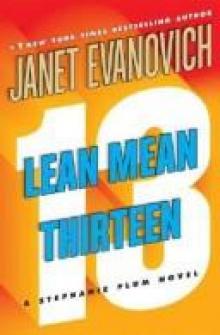 Lean Mean Thirteen
Lean Mean Thirteen One for the Money
One for the Money Full Speed
Full Speed Top Secret Twenty-One
Top Secret Twenty-One Turbo Twenty-Three
Turbo Twenty-Three Dangerous Minds
Dangerous Minds The Heist
The Heist Takedown Twenty
Takedown Twenty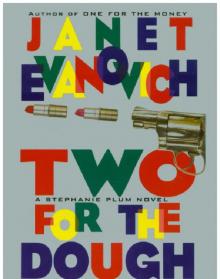 Two for the Dough
Two for the Dough Twelve Sharp
Twelve Sharp The Job
The Job Metro Girl
Metro Girl Full House
Full House The Scam
The Scam Hot Stuff
Hot Stuff Wicked Charms
Wicked Charms Hero at Large
Hero at Large Tricky Twenty-Two
Tricky Twenty-Two Plum Lovin'
Plum Lovin' Eleven on Top
Eleven on Top The Shell Game
The Shell Game Three to Get Deadly
Three to Get Deadly Four to Score
Four to Score Seven Up
Seven Up High Five
High Five Hot Six
Hot Six The Grand Finale
The Grand Finale Hard Eight
Hard Eight Plum Spooky
Plum Spooky Foul Play
Foul Play Ten Big Ones
Ten Big Ones Smokin' Seventeen
Smokin' Seventeen Fearless Fourteen
Fearless Fourteen Wicked Appetite
Wicked Appetite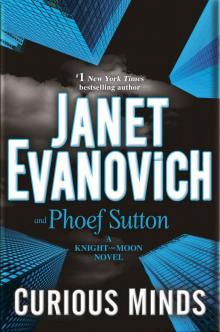 Curious Minds
Curious Minds Sizzling Sixteen
Sizzling Sixteen Wicked Business
Wicked Business The Big Kahuna
The Big Kahuna Explosive Eighteen
Explosive Eighteen Visions of Sugar Plums
Visions of Sugar Plums Full Blast
Full Blast Back to the Bedroom
Back to the Bedroom Finger Lickin' Fifteen
Finger Lickin' Fifteen Smitten
Smitten The Pursuit
The Pursuit Twisted Twenty-Six
Twisted Twenty-Six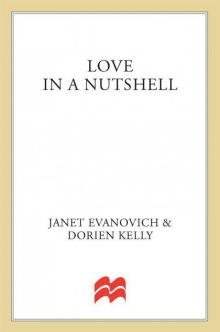 Love in a Nutshell
Love in a Nutshell The Chase
The Chase Notorious Nineteen
Notorious Nineteen Hardcore Twenty-Four
Hardcore Twenty-Four The Rocky Road to Romance
The Rocky Road to Romance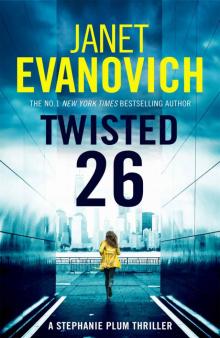 Twisted Twenty-Six (Stephanie Plum 26)
Twisted Twenty-Six (Stephanie Plum 26) Manhunt
Manhunt Plum Lucky
Plum Lucky Full Bloom
Full Bloom Wife for Hire
Wife for Hire Pros and Cons
Pros and Cons Fortune and Glory
Fortune and Glory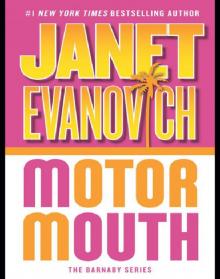 Motor Mouth: A Barnaby Novel
Motor Mouth: A Barnaby Novel Naughty Neighbor
Naughty Neighbor To the Nines
To the Nines The Husband List
The Husband List Fearless Fourteen: A Stephanie Plum Novel
Fearless Fourteen: A Stephanie Plum Novel Smitten - LOVESWEPT - 392
Smitten - LOVESWEPT - 392 Plum 12 - Twelve Sharp
Plum 12 - Twelve Sharp Smokin' Seventeen: A Stephanie Plum Novel (Stephanie Plum Novels)
Smokin' Seventeen: A Stephanie Plum Novel (Stephanie Plum Novels)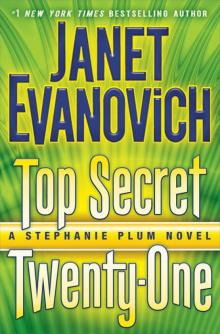 Top Secret Twenty-One: A Stephanie Plum Novel
Top Secret Twenty-One: A Stephanie Plum Novel SMITTEN (Loveswept, No 392)
SMITTEN (Loveswept, No 392)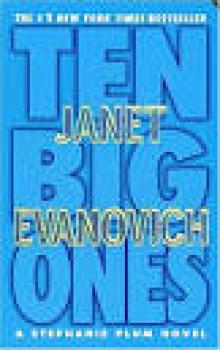 Plum 10 - Ten Big Ones
Plum 10 - Ten Big Ones Tricky Twenty-Two: A Stephanie Plum Novel
Tricky Twenty-Two: A Stephanie Plum Novel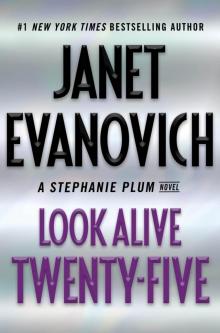 Look Alive Twenty-Five
Look Alive Twenty-Five Wicked Charms: A Lizzy and Diesel Novel
Wicked Charms: A Lizzy and Diesel Novel Motor Mouth
Motor Mouth Pros and Cons: A Short Story
Pros and Cons: A Short Story The Shell Game: A Fox and O'Hare Short Story (Kindle Single)
The Shell Game: A Fox and O'Hare Short Story (Kindle Single) Plum Boxed Set 1, Books 1-3 Stephanie Plum Novels)
Plum Boxed Set 1, Books 1-3 Stephanie Plum Novels) Between the Plums
Between the Plums